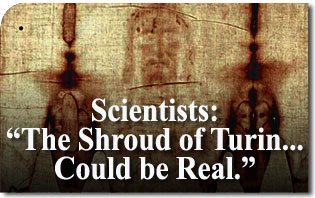 The media in general are quick to throw doubt on relics and traditionally acclaimed holy objects of the Church. Few objects of veneration have attracted so much controversy as the Shroud of Turin. The debate was thought to have been concluded when scientists tested the authenticity of the burial cloth of Our Lord with its distinct photo-negative image using carbon-14 dating. Based on this “definitive” test, the shroud was declared an image of medieval origin
The media in general are quick to throw doubt on relics and traditionally acclaimed holy objects of the Church. Few objects of veneration have attracted so much controversy as the Shroud of Turin. The debate was thought to have been concluded when scientists tested the authenticity of the burial cloth of Our Lord with its distinct photo-negative image using carbon-14 dating. Based on this “definitive” test, the shroud was declared an image of medieval origin
However, the debate is far from over. Scientists have recently called into question the “infallible” carbon dating reading. A team of specialists at the Polytechnical Institute in Turin have said that a powerful earthquake could have caused the image to form in the year 33 A.D., putting its creation at the very year Our Lord suffered His crucifixion, death and burial.
They claim the famous 8.0 earthquake that historically hit Jerusalem around the year 33 would have released neutron particles due to pulverizing rock, which could have reacted with nitrogen nuclei, creating the image on the shroud. They also believe this could have been the reason that the carbon-14 dating test resulted in dates that were far off the mark.
Though this is only a theory, the fact that the team raises the subject means that debate over the shroud is not a closed case by any means.
